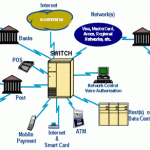
10 best practices in mobile video advertising
GoMobi survey results.pl clearly indicate that the potential of video in the mobile channel is impressive, and we are only at the initial stage of using this channel by the advertising business. Due to its characteristics, mobile róIt is very different from desktop. It is therefore worth collecting a set of good practices on how toób prepare a campaign so that it meets with the interest of consumersów.
A video campaign should be multiscreen, but with a mobile first message
According to the report „Mobile video 2016” already 41% of peopleób in Poland have declared that they watch online video content on a smartphone or tablet. The results clearly show that mobile has become a popular and mass channel, and unlike TV, it accompanies us 24h/7. We should therefore plan our activities in such a way as to give consumers a chance to watch an advertising spot before they sit in front of the TV screen in the evening.
The survey results show that video distribution is mainly done on four/five platforms: YouTube, Facebook, Instagram, Snapchat. Therefore, the first recommendation is supported by the next one – with the right choice of the group of recipientsóIn this way, we have a much better chance of reaching the consumer than during an advertising block on the big screen.
Mobile does not yet have the problem of adblocków
This is a problem with whichóToday, the desktop advertising market is measured by the number of people who watch online video content on their smartphones or tablets, and Poland is in the lead with 42%óThe infamous. In the case of mobile, it is assumed that this indicator is below 5%, so the possibility of reaching an ad is much greater.
In mobile’s favour is the fact that a significant part of traffic takes place in applications, and not through web browsers, whichóThe advantage of mobile is that much of the traffic comes through applications, and not browsers that have the ability to install ad-blocking plugins. An additional argument is e.g. Much better developed mechanisms of native advertising, whichóra rewards the useróIn exchange for watching a spot from the list of offers, which you can choose fromówhich the user is free to choose at his/her own discretion (the so called “beacon”). rewarded engagement). Each task is described (watch the spot/install the app) along with the amount of bonus value, whichóThe best practice in mobile video advertising.
Case studies of campaigns implemented in this model clearly show that it is a proven and effective solution. The CV (Completed Views) indicator oscillates there at the level of nearly 90%, which is almost unique in the world of mediów. The solution is mainly available in games and dating applications, whichóThe beacons are not yet popular among theód advertisersóThe mobile video advertising model is a very complex one, but given the engagement rates it generates, it is to be expected that it will be a very effective way to reach the target audienceóThe biggest brands will notice them.
The right proportions
A big mistake duplicated by the marketerów is a format adaptationóIn the past, some of the most important factors have been the shift from desktop to mobile videoóre elements after scaling become completely unreadable. They are m.in. too small subtitles on the last frame of a spotów financial, któwhich contain relevant statutory notices (e.g. The argument for adapting the spot from TV, where there is a complete lack ofóIn FMCG, proper and clear packshot editingów.
My observation shows that mobile creatives are prepared and presented on large screens in conference rooms and are based on HD quality video, where all details are perfectly visible. Rarely does an agency presentation take place on a smartphone, not móIt is not a coincidence that more and more brands are willing to watchóThe spot, whichóThe adserver adjusts the quality of the stream to the speed of the connection, but it is worth it. It is also crucial to test a creative on a 3G connection, not on fast Wi-Fi. Supportómodern ad servers adjust the quality of the stream to the speed of the connection, but it is worth „organically” check if our creative will be readable enough also in lower resolution.
Krósmall but informative content
Survey respondents answered that the time of mobile video advertising, któThey should have up to 30 seconds (13%). Next in order are: material up to 1 minute and up to 2 minutes – 12 and 9% respectively. Then we have the so called. micropicture materials (associated mainly with theóThe order is reversed in the case of mobile applications using video (including Vine and Instagram), i.e. up to 6 s. and 15 s. It turns out that 7% prefer only such materials whichóre can be omitted. skip function). With the growing number of ads on mobile, the followeróThe number of new applications in the skip function is bound to increase. It is worth preparing it now so that the key message and Call-To-Action are included in the first seconds of the video. It is also another counter-argument for the adaptation of TV spots, where there is a complete lack of skip options.
An internet spot is much more likely to generate interest if it premieres online before its TV premiere. This was discovered several years ago but is still not widely used. It is worth remembering about the viral effect, and also trying to create a PR background in social media. A dull TV spot on the web will be overlooked, which ultimately makes the effectiveness of the whole campaign worse.
Video creation, któThe video is well watched with and without sound
According to the GoMobi study.pl 61% consumerów people watch videos with the sound turned off by default, and only 20% always turn on the sound. It is worth taking this into account when creating and preparing the spot in such a wayób to make it understandable rówithout sound – e.g. On Facebook, it is becoming more and more common to use the captionów. The theme of silence itself can be a cool idea to use e.g. in vehicle advertisingów electric powered.
Live video
Already 1/4 of the Internet users surveyedóThe most popular platforms (Facebook, Meerkat, Periscope) function mainly on smartphones, so the assumption that this format is dedicated to mobile can be considered rather correct. Live stream is becoming important as brands become more active at events. It is no coincidence that more and more brandów gets involved in mass festivals like the Open’er, Woodstock etc. Thanks to private broadcasts made available on social media platforms, they gain free reach and perfectly build positive brand associations.
360°
360 video° This, in turn, is an introduction to a completely new world of immersive, spectacular Virtual Reality experiences. Oculus Rift set the direction, but its spectacular success came at the moment, when the smartphones inserted into special glasses were harnessed to play VRóThe Google Cardboard project has become synonymous with this.
Completely new possibilities open up here for advertisers. Manufacturing pioneers are additionally gaining the envelope of innovatorów, and the resulting huge organic reach.
Presence in głóThe following applications: YouTube, Facebook, Snapchat
According to the report „Mobile video 2016” The two most popular video services among theód mobile useróincluding YouTube and Facebook – 51% and 42% of respondents respectively. In the case of mobile applications that use video, the order is reversed. Facebook has 53 46% of responses, and YouTube 45%. Followed by Instagram (21%), Snapchat (16%), Twitter (11%). YouTube is also the most popular website or app for watching videosóon demand via mobile device.
Recommendations for marketersów – It is worthwhile for video mobile ads to resemble user-created content as much as possibleóin the most popular servicesów. The material should be as authentic as possible. Recording and editing faster zróbmy of the so called „hand”, and not so far in the studio.
Vertical and horizontal video viewing
According to Celtra, a platform specializing in providing formatóin rich media and creative hosting, 98% userów surfing the web while holding the phone vertically (vertical). Currently dominated by horizontal, but for optimal comfort, it is good practice to broadcast video also in vertical format. The vertical format opens up many new creative possibilities for twórców. It also fits into the 360 video trend°.
„Drive to store” or generating visits to a POS
Headóin: conversion of messages/couponsóhe mobile factor in the advertising world is the possibility of geolocation. Oprócz ad impression in the context of place and time, it is also worth using the possibility of navigation to the nearest POS. The mechanism will prove useful in case of networks with a large firewallóln Poland’s density, e.g. Orlen stations, Lidl stores, Rossmann etc.




